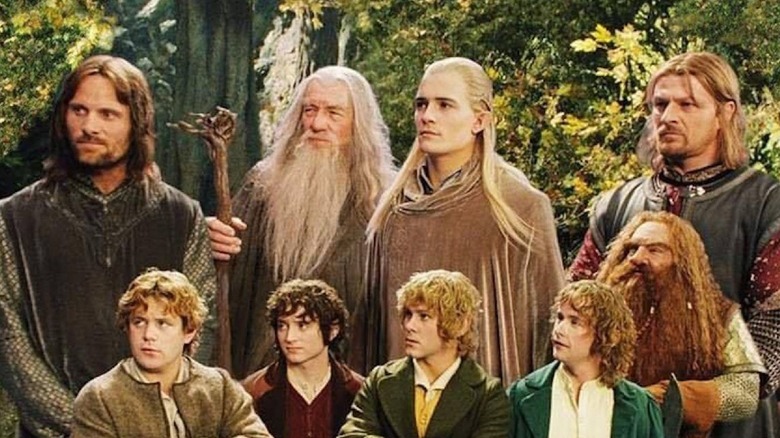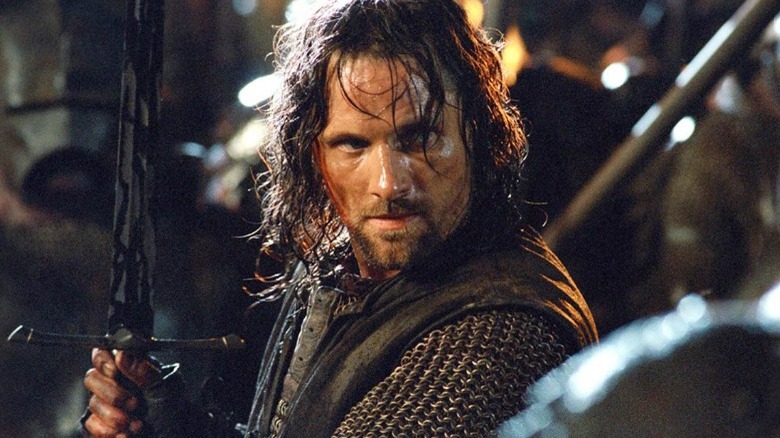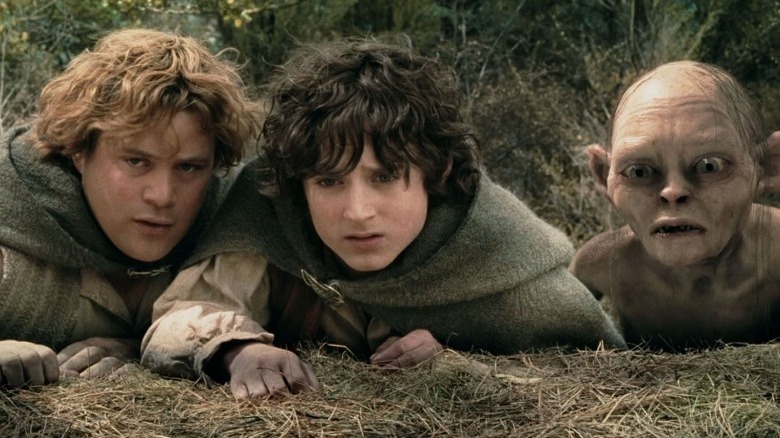Peter Jackson's Original Vision For The Lord Of Rings Was Quite Different
"The Lord of the Rings" set a new standard for fantasy filmmaking, bringing to the big screen material that had previously been considered unfilmable. Of course, remaining true and faithful to J.R.R. Tolkien's dense, detailed work means that the films are famously lengthy. However, director Peter Jackson and screenwriter Fran Walsh originally planned on abridging the threes books into two films, which would have radically altered the entire structure.
The road to "The Lord of the Rings" was long and stressful for Jackson, but his efforts paid off and the films are hailed as the definitive loving adaptations of Tolkien's seminal work to this day. Miramax was originally handling production since the company distributed "Heavenly Creatures," Walsh and Jackson's previous Oscar-nominated project. The pair were locked in a first-look deal, meaning that they were bound to the whims of now-notorious producer Harvey Weinstein. Weinstein helped secure the rights from Saul Zaentz, who had produced Ralph Bakshi's animated "The Lord of the Rings" in 1978, but he also limited the project to two films and set a $75 million dollar limit on the budget for both movies.
An impossible two-part epic
Peter Jackson, Fran Walsh, and playwright and screenwriting collaborator Stephen Sinclair did end up composing two scripts entitled "The Fellowship of the Ring" and "War of the Ring." The former should sound familiar as the first section of the trilogy, but the latter was a truncated version of the second and third parts of the story. Jackson realized that compressing Tolkien's sprawling epic to the span of two films, especially with a small-scale budget not fit for such large-scale material, was next to impossible.
Drew McWeeny wrote a report for Polygon that explained how different a two-film "Lord of the Rings" saga would have been after some unidentified player leaked the scripts to his website. According to McWeeny:
"These early drafts managed to build in most of the major incidents of the series but without the character texture that makes the trilogy so special. It felt like watching the eventual movies on 1.5x speed playback, everything compressed and accelerated ... More than anything, the two-film version felt like every choice they made was about trying to turn these into more conventional blockbusters at the expense of the dense history and the poetry that defines Tolkien's work."
Where'd the elves go?
More specifically, McWeeny explains that primary characters who were essential parts of Tolkien's epic and became central to Jackson's eventual trilogy were mere footnotes. For instance, Aragorn is mentioned but never appears. The same goes for the elves, which means that Arwen never shows up and Frodo steps in to perform Galadriel's iconic intro narration instead.
In fact, it seems as if the story concentrated mainly on Frodo and Sam, who got to perform the walking songs Tolkien wrote for their expeditions. Even so, it sounds like the two barely spent any time at the Shire, and their relationship with Gollum didn't flesh out the latter's tragic morality. Instead, Gollum was, as McWeeny puts it, a "plot device." The ending cliffhanger for the first film saw Sam, Frodo, and Gollum together, an event that doesn't happen until "The Two Towers" which throws the whole structure of the story into disarray.
"The Lord of the Rings" trilogy is epically long, accumulating to 558 minutes (over nine hours) of story, and that's not even counting the extended cuts that go on for a whopping 686 minutes (almost eleven and a half hours). Considering all that, it's wild to think how the original plan was to turn a tale that long into a measly two-movie sprint.


